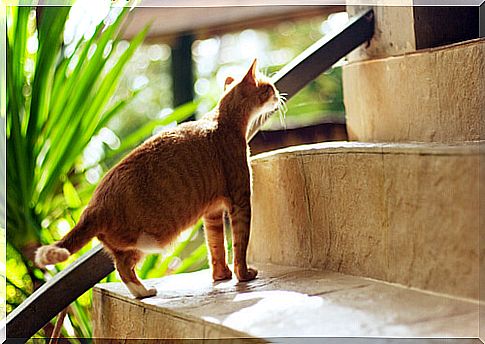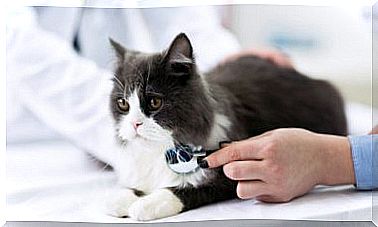Caring For A Cat With An Amputated Leg

A cat with a severed paw can be very confusing to humans who care for it. Although it is a fact that causes sadness, it must also be said that cats adapt perfectly, after a while, to their new situation.
The reasons why a feline must suffer a leg amputation may have to do with broken bones or malignant diseases. If we refer to bone problems, these are cases in which it is impossible for the bones to weld and allow acceptable mobility to the animal.
Although at first glance it seems a drastic measure, the truth is that a cat with an amputated leg does much more favorably than with a poorly welded bone.
What care does a cat with an amputated leg need?
The surgical procedure is relatively straightforward. The veterinarian or veterinarian proceeds to provide analgesics and anesthesia and then remove the limb. The best care begins at home, since it is necessary for a cat with an amputated leg to remain at rest and not to lick the wound.
The feline will come home with the wound area bandaged. Here it is important to provide care according to medical indications; bandages generally need to be changed daily. Analgesics are essential, since in the first days the pain can be quite annoying.

The Elizabethan collar will be unavoidable for a cat with a severed paw. Until the wound is completely healed, if the animal licks or bites the area to pull out the stitches, there could be complications.
Remember, home care is not enough; In the first weeks, the veterinarian must monitor the evolution of the pet’s paw.
Adapt to the new life
At first it will cost a bit. The cat will not understand what happened, it will try to walk and will not be able to, so it is logical that it is anxious and even scratches. It will be strange for him not to be able to jump from one piece of furniture to another in the house, as cats usually do.
To make this adaptation process more bearable for our pussycat friend, soft surfaces can be provided on which to lie down for a longer time.
The ramps are one of the resources to help the cat with an amputated leg, especially to get them up and down windows and places that allow them access to the outside, if the house has them. It is important that the cat maintains an active life and recovers as soon as possible, especially if it is of a certain age.

In case the animal is older, the prosthesis for a cat with an amputated leg could be of great use, at least until it adjusts to the lack of the limb. If you remain too inactive, it will be necessary to think about a specific diet so that you do not gain weight, since this would only result in greater immobility.
When the cat perceives confidence and tranquility, little by little it will be able to move naturally. If the amputation is of one of the hind legs, it will not be difficult for it to move as naturally as before the operation.
In the event that the feline is missing a front leg, the recovery will take a little longer, among other things due to the distribution of the weight of the quadrupeds. You just have to learn to support your body weight. In general, the process takes between four and six weeks.
Some interesting tips
Next, we will see a list of tips to help the amputee pet:
- Caring for, healing the wound and providing pain relievers the first week after the operation.
- Carry out the corresponding controls with the veterinarian.
- Provide adequate surfaces and ramps so that new mobility is not forced.
- Provide a balanced diet so that you do not gain weight.
- Don’t force him to walk if he doesn’t feel like doing it.
- Encourage the animal through its toys and favorite foods.
- Adapt feeders and the places where the cat relieves itself.
- Keep their spaces and their fur clean.
In conclusion, it is the love received that will give the most benefits to the cat with an amputated leg. The animal perceives care and trust, as well as care for proper healing. Patience is essential in this new stage of your life.









